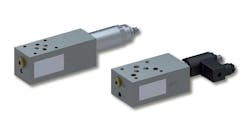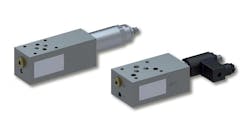Three-way pressure reducing cartridge valves feature a slim design with proportional or mechanical adjustment. They are available as direct-acting screw-in cartridges with an M27x2 or ¾-16 UNF mounting thread, and as ISO size 3 and 5 sandwich valves. They provide high stability combined with low losses. During mechanical actuation, direct-acting designs are rated for maximum operating pressures from 250 to 315 bar, and maximum flow rates of 20 to 70 lpm. Versions with proportional solenoid actuation, seated pilot design are rated for maximum operating pressures to 350 bar and flow rates from 60 to 120 lpm.
Bucher Hydraulics, (262) 857 3900, www.bucherhydraulics.com
About the Author
Sign up for our eNewsletters
Get the latest news and updates

Leaders relevant to this article:

